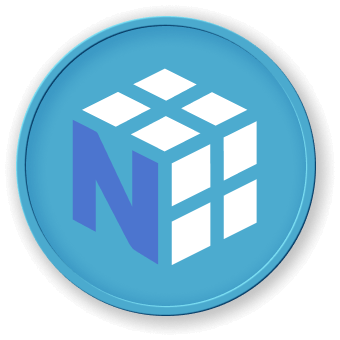Learn NumPy, the foundation of scientific computing in Python, with a structured learning path designed for beginners. This collection of hands-on NumPy courses provides a systematic way to master array operations, broadcasting, and numerical algorithms. Through practical exercises in a numerical analysis playground, develop real-world skills in efficient data manipulation and computation. This roadmap is ideal for anyone starting their journey in data science.
TABLE OF CONTENTS
ARRAY BASICS
Array Basics cover the fundamental concepts and operations related to creating, manipulating, and understanding NumPy arrays, including 1D and multi-dimensional array creation, data types, shapes, and basic attributes.
1D Array Creation involves creating one-dimensional NumPy arrays, which are essential building blocks for more complex data structures.
Multi-dimensional Array Creation focuses on creating NumPy arrays with multiple dimensions to represent structured data efficiently.
Data to Array explains how to convert different types of data, such as lists or tuples, into NumPy arrays for data manipulation and analysis.
Shapes and Dimensions cover the methods for understanding and manipulating the shape and dimensions of NumPy arrays.
Data Types explain the different data types supported by NumPy and how they influence data representation and computation.
Basic Attributes explain the essential attributes of NumPy arrays, such as size, shape, and dimensions, which are crucial for array manipulation.
INDEXING AND SLICING
Indexing and Slicing are fundamental techniques for accessing and manipulating specific elements or subarrays within NumPy arrays.
Basic Indexing covers the fundamental method of accessing individual elements or slices of a NumPy array using integer indices.
Slicing involves extracting specific portions or subarrays from a NumPy array using slice notation, making data extraction more efficient.
Boolean Indexing allows you to select elements from a NumPy array based on Boolean conditions, facilitating data filtering and extraction.
Fancy Indexing enables you to select and retrieve elements from a NumPy array using arrays of indices or masks, providing flexibility in data extraction.
ARRAY MANIPULATION
Array Manipulation involves various operations for reshaping, transposing, merging, splitting, and repeating NumPy arrays to modify their structure and content.
Reshape is the process of changing the dimensions and shape of a NumPy array while preserving its data, allowing for versatile array transformations.
Transpose and Axis Swap are techniques for rearranging the dimensions of a NumPy array, useful for various mathematical operations and data transformations.
Merge explains how to combine multiple NumPy arrays into a single array along specified axes, facilitating data aggregation.
Split involves dividing a NumPy array into multiple subarrays based on specified criteria, enabling data partitioning.
MATH AND STATISTICS
Math and Statistics group covers various mathematical and statistical operations that can be performed on NumPy arrays.
Math Operations include basic arithmetic operations, trigonometric functions, logarithmic functions, and more for numerical computations.
Linear Algebra explains how to perform matrix operations, such as matrix multiplication, determinant calculation, and eigenvalue analysis, using NumPy.
Statistical Analysis involves functions for calculating descriptive statistics, hypothesis testing, and data analysis on NumPy arrays.
Random Numbers cover generating random data and random sampling from various probability distributions using NumPy.
ADVANCED FEATURES
Advanced Features in NumPy include broadcasting, sorting, searching, and universal functions, which provide powerful capabilities for working with arrays.
Sort and Search involve methods for efficiently sorting and searching elements within NumPy arrays, which are essential for data analysis.
Universal Functions are functions that operate element-wise on NumPy arrays, offering fast and convenient mathematical and logical operations.
FILE INPUT/OUTPUT
File Input/Output group focuses on reading and writing data to text and binary files using NumPy, facilitating data import and export.
Text File Input/Output explains how to read and write NumPy array data to text files, allowing for interoperability with other software.
SPECIAL TECHNIQUES
Special Techniques encompass advanced methods and specialized features in NumPy that are useful for specific data handling scenarios.
Masked Arrays involve handling data with missing or invalid values by using masked arrays, where certain elements are masked or ignored during operations.
Structured Arrays enable organizing and manipulating heterogeneous data, such as structured records, in a structured and efficient manner.
